Safety Engineering: A Life Sciences Approach
Mary Capelli Schellpfeffer, MD, MPA, spoke at a recent IEEE Metro Area Workshop. Here she recounts her work in safety engineering.
IEEEtv: As a medical professional, what drew you to the field of safety engineering?
Capelli-Scheellpfeffer It’s really an important part of my career. I was involved in a series of industrial accidents that deeply affected the individuals that survived, as well as their families, their coworkers and their employers. As part of the caregiving team, and the response team to those events, I worked closely with engineers to try to understand what happened. Our initial efforts to learn what might have been the factors that led to these tragedies, were frustrated by what we didn’t know, what we didn’t understand about the events. Through those experiences I became more directly involved with engineers trying to address very unforeseen, and yet serious, consequences to industrial and safety-sensitive processes. That was the beginning: trying to follow up and understand tragedy in order to prevent it became the beginning of a dialogue and exchange with engineering professionals that has, over the last years, taken me deeper and deeper into the engineering family, and allowed me to learn more about how we can address safety from a systems perspective, how we can work together and integrate our solutions so that they’re more effective, more reliable; and how we can think together about solutions to problems that, separately, we might not be able to understand as well or might not even imagine exist. Our dialogue, and our exchanges through forums like the IEEE Life Sciences community, can really enhance how we do our work, for my part, most often in the medical community working with patients, but also how, on the other side of the equation, employers are acting every day to create new products, new services, new ways of doing business so that they can be part of that dialogue too.
IEEEtv: What keeps you motivated for this work?
Capelli-Scheellpfeffer Well, for one thing, we haven’t solved all of our problems. We know, for example, that it is still possible for someone to get killed on the job, and every day in the United States that happens, more than one, that someone is killed doing their regular job. And why should anyone have to die simply while earning their paycheck? That’s unacceptable, and yet it happens every day. I guess I keep coming back because we haven’t solved the problem yet. We still have people who die in their assignments, unexpectedly, unnecessarily. We can honestly say that no one wants to go to work to get killed. No one wakes up in the morning and says “today is the last day I am ever going to work because I am going to leave the face of the planet shortly.” No, nobody does that, and yet, it happens every day. So that’s what keeps me coming back. We haven’t solved it. I think my interest in bringing what we’ve learned from industry from safety-sensitive environments like the process businesses, high power energy delivery enterprises is that lessons from those experiences can apply more directly to what we’re doing in healthcare and the life sciences, so it’s as if what I am experiencing is the full circle of understanding how safety has its presence that can be felt when you bring systems together, integrate them, dialogue and work together; not at the level one-to-one, but creating an effect that is more than one-to-one. Creating synergy. Creating what, in the systems safety community, we talk about as the emergent property of safer operational activities, safer patient care in the life sciences world.
IEEEtv: Please summarize your workshop presentation.
Capelli-Scheellpfeffer In life sciences, we’re at the cusp of a really dramatic shift in our industry. Transformation is flowing through healthcare, through environmental management, through remediation to the oceans, as we deal with tragedies like hurricanes and earthquakes and we try to keep our communities safer from a public health perspective, and how to keep individuals safe, from an individual health perspective. The transformation coming through is that we have a more detailed and deeper and wider information to work with, and that information is only possible because of the advances in computer engineering and technologies that have allowed information to be analyzed and described, we talk about that as data analytics, and data visualization. But the great promise of that is that we’ll be having, across very broad communities, tremendous access to understanding what we might do differently to improve how we take care of ourselves, how we take care of our neighborhoods, how we take care of our natural resources. So, I was trying today to really lay out the promise to life sciences from the opportunities that the advances in computer engineering and engineering management in highly industrial environments, from a safety systems perspective; how those data-enabled, and process system embedded strategies can really offer, for communities and individuals, a whole new horizon that’s only possible today because of the advances in engineering. There are six billion mobile telephones in use today. Over 85% of the global population has access to a mobile signal off of a network. That means that information access and flow is unlike any other time in human history. This moment for life science has never been seen before. To create that collaboration, and connection with the engineering experts in the room; it just was an opportunity I was very eager to try to pursue and to be here and be a part of.
IEEEtv: You have a strong affinity for the engineering community. Where does that come from?
Capelli-Scheellpfeffer Engineers see the world in terms of possible solutions. The inclination and the is to not accept problems as they are, but to be engaged and active and even determined to act upon problems in a way that achieves a better moment, a better solution for those who can benefit. From my perspective, engineering has an inclination to resist the status quo, to resist complacency. Engineers are the creators of our solutions across many different aspects of our experience of life on Earth and I am so appreciative of their work, and what they can do and how they do their work. I think all of us have to pay attention to the achievement, and really see how we can follow in those footsteps that American engineers have laid out, and global engineers have created, through their collaborations, and their willingness to dialogue, and share together and really very large scale projects that are able to achieve enormous good.
Contributor
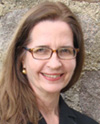 Mary Capelli-Schellpfeffer, MD, MPA, is Medical Director of Loyola University Health System’s Occupational Health Services, and Associate Professor, Department of Medicine, Loyola University Chicago Stritch School of Medicine. Dr. Mary Capelli-Schellpfeffer guides Loyola’s occupational medicine programs. An IEEE Fellow and global consultant regarding electrical safety, she is widely recognized for her work on risk mitigation in complex systems. Read more
Mary Capelli-Schellpfeffer, MD, MPA, is Medical Director of Loyola University Health System’s Occupational Health Services, and Associate Professor, Department of Medicine, Loyola University Chicago Stritch School of Medicine. Dr. Mary Capelli-Schellpfeffer guides Loyola’s occupational medicine programs. An IEEE Fellow and global consultant regarding electrical safety, she is widely recognized for her work on risk mitigation in complex systems. Read more







 Mary Capelli-Schellpfeffer, MD, MPA, is Medical Director of Loyola University Health System's Occupational Health Services, and Associate Professor, Department of Medicine, Loyola University Chicago Stritch School of Medicine. Dr. Mary Capelli-Schellpfeffer guides Loyola's occupational medicine programs. An IEEE Fellow and global consultant regarding electrical safety, she is widely recognized for her work on risk mitigation in complex systems.
Mary Capelli-Schellpfeffer, MD, MPA, is Medical Director of Loyola University Health System's Occupational Health Services, and Associate Professor, Department of Medicine, Loyola University Chicago Stritch School of Medicine. Dr. Mary Capelli-Schellpfeffer guides Loyola's occupational medicine programs. An IEEE Fellow and global consultant regarding electrical safety, she is widely recognized for her work on risk mitigation in complex systems.  Emily Sopensky co-founded the RFID in Healthcare Consortium in 2008 as an educational not-for-profit addressing technology primarily in healthcare facilities. Initially created 5 years ago by the RHCC, 2014 is the first year the Symposium has substantial IEEE involvement (Life Sciences and Engineering Medicine and Biology Society). As an active IEEE volunteer and Chair-Elect, IEEE Technical Committee on RFID (CRFID), she anticipates next year's symposium will similarly have active IEEE participation.
Emily Sopensky co-founded the RFID in Healthcare Consortium in 2008 as an educational not-for-profit addressing technology primarily in healthcare facilities. Initially created 5 years ago by the RHCC, 2014 is the first year the Symposium has substantial IEEE involvement (Life Sciences and Engineering Medicine and Biology Society). As an active IEEE volunteer and Chair-Elect, IEEE Technical Committee on RFID (CRFID), she anticipates next year's symposium will similarly have active IEEE participation. 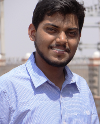 Kuldeep Singh V Rajput is a Project Associate at the Indian Institute of Technology, Madras, India. He received the B. Tech degree from the B.V. Bhoomaraddi College of Engineering and Technology. His research interests are in the field of VLSI, Computer Vision and Graphics, Haptics, Signal Processing, Biomedical Engineering and Biosensors.
Kuldeep Singh V Rajput is a Project Associate at the Indian Institute of Technology, Madras, India. He received the B. Tech degree from the B.V. Bhoomaraddi College of Engineering and Technology. His research interests are in the field of VLSI, Computer Vision and Graphics, Haptics, Signal Processing, Biomedical Engineering and Biosensors. 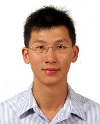 Po-Yen Wu is a Ph.D. student in the School of Electrical and Computer Engineering at the Georgia Institute of Technology. His research interests include (1) designing novel methodologies to improve the data analysis pipeline for RNA-sequencing data, (2) exploring data-mining techniques for extracting meaningful patterns in electronic health records, and (3) integrating information from RNA-sequencing data and electronic health records to improve the prediction performance of clinical endpoints.
Po-Yen Wu is a Ph.D. student in the School of Electrical and Computer Engineering at the Georgia Institute of Technology. His research interests include (1) designing novel methodologies to improve the data analysis pipeline for RNA-sequencing data, (2) exploring data-mining techniques for extracting meaningful patterns in electronic health records, and (3) integrating information from RNA-sequencing data and electronic health records to improve the prediction performance of clinical endpoints. 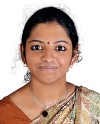 Janani Venugopalan is a Ph.D. student in the Joint Dept. of Biomedical Engineering at Georgia Institute of Technology and Emory University, Atlanta, Georgia. Her research focuses on health informatics. Her research focuses on clinical decision making using HER data, which are currently in collaboration with Children's Healthcare of Atlanta and Emory.
Janani Venugopalan is a Ph.D. student in the Joint Dept. of Biomedical Engineering at Georgia Institute of Technology and Emory University, Atlanta, Georgia. Her research focuses on health informatics. Her research focuses on clinical decision making using HER data, which are currently in collaboration with Children's Healthcare of Atlanta and Emory. 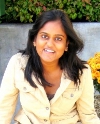 Sonal Kothari received her Ph.D. degree in the School of Electrical and Computer Engineering at the Georgia Institute of Technology, Atlanta. She is currently a postdoctoral fellow working under Principle Investigator May D. Wang in the Department of Biomedical Engineering at Georgia Tech and Emory University. Her research interests are in the areas of imaging informatics, histopathological image analysis, pattern recognition, and visualization.
Sonal Kothari received her Ph.D. degree in the School of Electrical and Computer Engineering at the Georgia Institute of Technology, Atlanta. She is currently a postdoctoral fellow working under Principle Investigator May D. Wang in the Department of Biomedical Engineering at Georgia Tech and Emory University. Her research interests are in the areas of imaging informatics, histopathological image analysis, pattern recognition, and visualization. 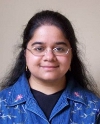 Chanchala D. Kaddi is currently a Ph.D. student in Bioengineering at Georgia Institute of Technology. She is a National Science Foundation Graduate Research Fellow. Her research interests are in computational systems biology and bioinformatics, including methods for mass spectrometry imaging data analysis and predictive models for cancer research.
Chanchala D. Kaddi is currently a Ph.D. student in Bioengineering at Georgia Institute of Technology. She is a National Science Foundation Graduate Research Fellow. Her research interests are in computational systems biology and bioinformatics, including methods for mass spectrometry imaging data analysis and predictive models for cancer research. 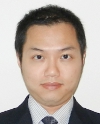 Chih-Wen Cheng is currently pursuing his Ph.D. as a graduate research assistant in the School of Electrical and Computer Engineering. His research focuses on applying data mining, cloud computing, and mobile technologies to improve clinical decision-making to facilitate quality-of-healthcare.
Chih-Wen Cheng is currently pursuing his Ph.D. as a graduate research assistant in the School of Electrical and Computer Engineering. His research focuses on applying data mining, cloud computing, and mobile technologies to improve clinical decision-making to facilitate quality-of-healthcare. 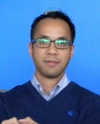 John H. Phan is an assistant research professor in the Department of Biomedical Engineering, Georgia Institute of Technology and Emory University, Atlanta, Georgia, USA. He received his Ph.D. degree in biomedical engineering from the Georgia Institute of Technology and Emory University. His research is focused on knowledge-driven high-throughput analysis of biomedical data, high-performance and grid computing, and integrative bioinformatics.
John H. Phan is an assistant research professor in the Department of Biomedical Engineering, Georgia Institute of Technology and Emory University, Atlanta, Georgia, USA. He received his Ph.D. degree in biomedical engineering from the Georgia Institute of Technology and Emory University. His research is focused on knowledge-driven high-throughput analysis of biomedical data, high-performance and grid computing, and integrative bioinformatics. 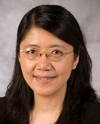 May Wang is an Associate Professor in the Joint Department of BME, School of ECE, The Winship Cancer Institute, IBB, and IPaT at Georgia Institute of Technology and Emory University, USA. She is a Georgia Research Alliance Distinguished Cancer Scholar, Director of the Biocomputing and Bioinformatics Core in Emory-GeorgiaTech Cancer Nanotechnology Center, and Co-Director of Georgia-Tech Center of Bio-Imaging Mass Spectrometry. Prof. Wang's research is on Big Biomedical Data Analytics with a focus on Biomedical and Health Informatics (BHI) for Personalized and Predictive Health. It includes high throughput next generation sequencing and -omic data mining to identify clinical biomarkers, pathological imaging informatics, health informatics, bionanoinformatics, and systems modeling.
May Wang is an Associate Professor in the Joint Department of BME, School of ECE, The Winship Cancer Institute, IBB, and IPaT at Georgia Institute of Technology and Emory University, USA. She is a Georgia Research Alliance Distinguished Cancer Scholar, Director of the Biocomputing and Bioinformatics Core in Emory-GeorgiaTech Cancer Nanotechnology Center, and Co-Director of Georgia-Tech Center of Bio-Imaging Mass Spectrometry. Prof. Wang's research is on Big Biomedical Data Analytics with a focus on Biomedical and Health Informatics (BHI) for Personalized and Predictive Health. It includes high throughput next generation sequencing and -omic data mining to identify clinical biomarkers, pathological imaging informatics, health informatics, bionanoinformatics, and systems modeling.